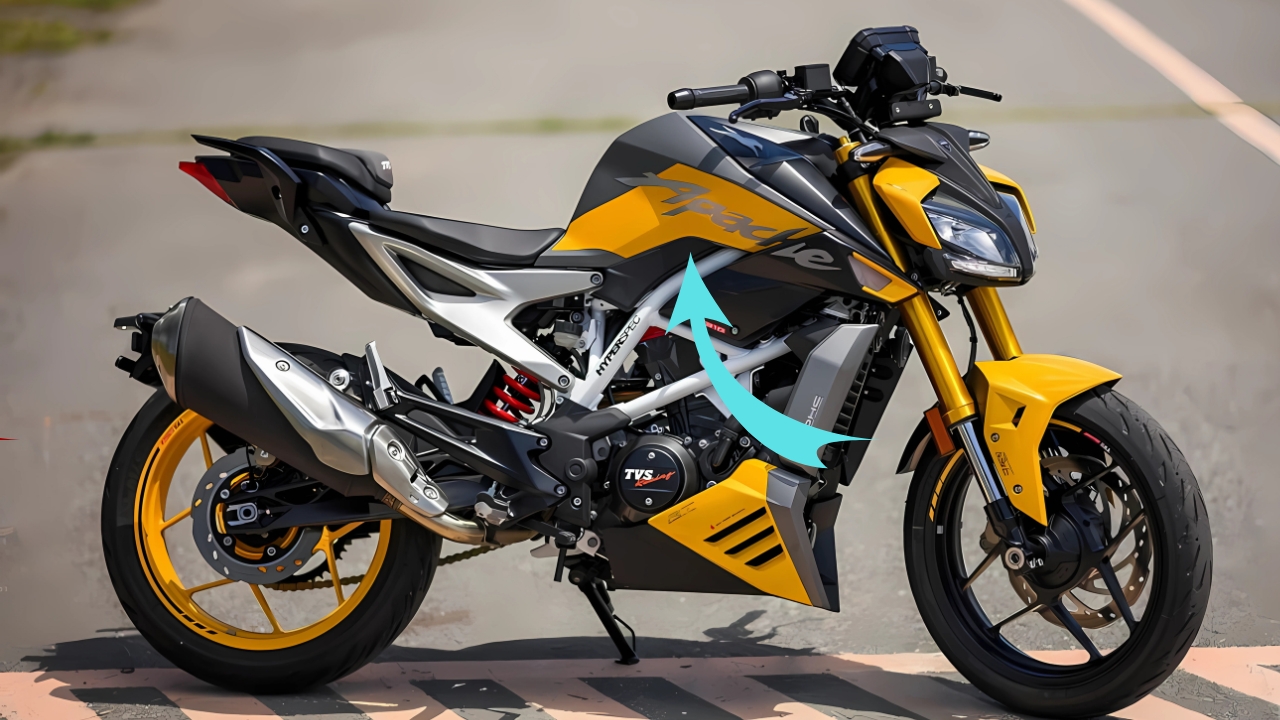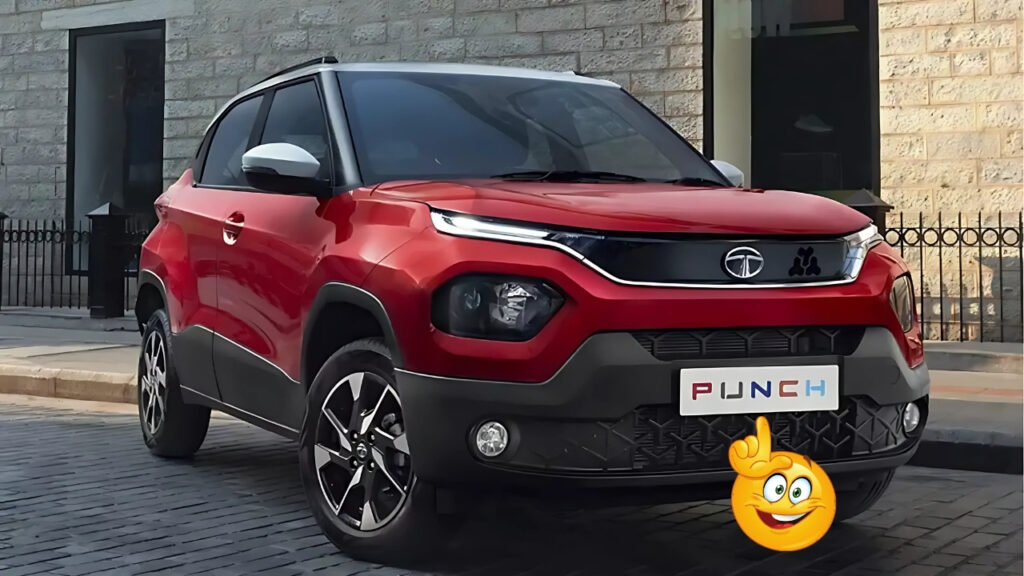TVS Apache RTR 310: Visually, the Apache RTR 310 stands tall in the compact motorcycle segment with its aggressive, sharply chiselled lines that TVS calls “Hypernaked.”
At the front, the cruiser gets a unique LED headlamp with DRLs forming a predatory stance, and an aggressively shaped fuel tank with pronounced extensions.
Th rear portion lifts violently, giving the whole machine a forward-biased stance which suggests this bike’s performance intentions at a standstill.
Unlike a lot of naked sports bikes, which are just fairing-less versions of a fully-faired model, the RTR 310 was created as an integrated naked bike from the ground up.
This leads to harmonious proportions and purposeful design details, such as the integrated LED turn indicators, the aero winglets, and belly pan for both aesthetic and aero efficiency.
Color options for the RTR 310 include Racing Red, Fury Black, and a special Racing Edition that adds graphics, but whatever you choose, the overall package isn’t much different than the RTR 310 we know and love from last year.
Appeal for motorcycle enthusiasts Translation: for the motorcycle novices: A bike designed around its frame (the frame’s exposed design fully emphasizes the limits of mechanical engineering) and its engine componentry (the engine is exposed, contributing to the overall styling) That’s not even including all the other bike configuration works (performance) that are built into the bike.
Table of Contents
TVS Apache RTR 310: Engine and Performance

Powering the Apache RTR 310 is a 312.2cc single-cylinder liquid-cooled engine with double overhead camshafts and four valves.
This powerplant makes around 35 horsepower at 9,700 rpm and 27.3 Nm of torque at 7,700 rpm, giving it one of the highest outputs for single-cylinder motorcycles.
While the Apache RTR 310 shares its core architecture with the fully-faired Apache RR 310, the engine has been tuned specifically to deliver peak torque at lower engine speeds, resulting in a more street-friendly power delivery.
The six-speed transmission uses a slipper clutch for precise shifts and reduced lever effort, while a ride-by-wire throttle enables multiple riding modes that adjust the power delivery characteristics to best suit the conditions.
Not only do these riding modes, which consist of Urban, Rain, Sport, and Track, alter the motorcycle’s nature, but they also affect throttle response, power delivery, and levels of electronic intervention.
This adaptability allows the RTR 310 to be appropriate for everything from crowded urban commuting to weekend track days.
Chassis and Dynamics
Cushioning the rider’s body is the trellis frame, developed with input from TVS Racing, which finds a sweet spot between rigidity for precise handling and flexibility, which provides a better feel and comfort.
Suspension-wise, 41mm upside down front forks and a preload-adjustable monoshock rear suspension complement a level of adjustability seldom found at this price point.
The RTR 310 also features a fairly compact 1,365mm wheelbase and sharp 25.7-degree steering head angle, and as a result, the motorcycle has sharp turn-in and extremely agile handling.
The 17-inch alloy wheels are shod with 110/70 front and 150/60 rear tires—high-quality rubber that delivers superb grip in a variety of conditions while providing clear feedback to the rider.
A 300mm front disc with radial-mounted four-piston caliper and a 240mm rear disc with single-piston caliper form the braking package.
Those parts are governed by a sophisticated dual-channel ABS system with cornering function—is an advanced tech originally reserved only for far more expensive motorcycles.
Technology Integration
The RTR 310 sets new benchmarks in terms of technology in its segment. It features a 5-inch TFT display that delivers clarity in all lighting conditions with customizable layouts and information.
Bluetooth connectivity ensures integration with a smartphone via the TVS SmartXonnect system, offering navigation guidance, incoming call notifications, and comprehensive ride telemetry.
The electronics suite features multiple ride modes and traction control, as well as wheelie control, both of which were traditionally reserved for bigger and more expensive bikes.
Riders can use the intuitive interface to customize the motorcycle’s behavior according to their riding style and environment.
All lighting is LED, with the headlight featuring cornering function that triggers extra illumination when leaning to turn—another elite touch not commonly found in this class.
The turn indicators have emergency stop signal functionality that activates hazard flashing during hard braking.
Riding Experience
The RTR 310 offers a familiar riding experience that remains as accessible as the bike itself is capable.
Ergonomics fall somewhere in the middle between the aggressive sporty positioning that would have you begging for help after a long ride and riding position you would find on a couch on your way to the store for some potato chips; moderately forward-leaning, comfortable enough to not wish for a cab halfway through a ride, yet sporty enough to give you control during some spirited cornering.
What is particularly impressive is how the motorcycle pulls this off with serious performance potential while also quiet confidence of everyday usability. Urban mode tames the power delivery for stop-and-going, while Sport and Track unleash all 1,160 cc on tap for a more aggressive ride.
Its versatility allows the RTR 310 to be legitimately capable of both daily transport and weekend entertainment.
TVS Apache RTR 310: Market Impact
Nevertheless, the Apache RTR 310 comes at a highly competitive segment with players that have a been there, done that approach, which undoubtedly makes the RTR 310’s capabilities a unique selling point.
TVS has made a strong offering for enthusiasts who want premium motorcycling features without paying premium prices, offering features that were once only available on machines with significantly higher price tags.
More broadly, the RTR 310 signifies the continuing maturity of the Indian motorcycle industry, proving that local manufacturers can produce world-class products that measure up against the competition from abroad both in specification and real-world performance.
